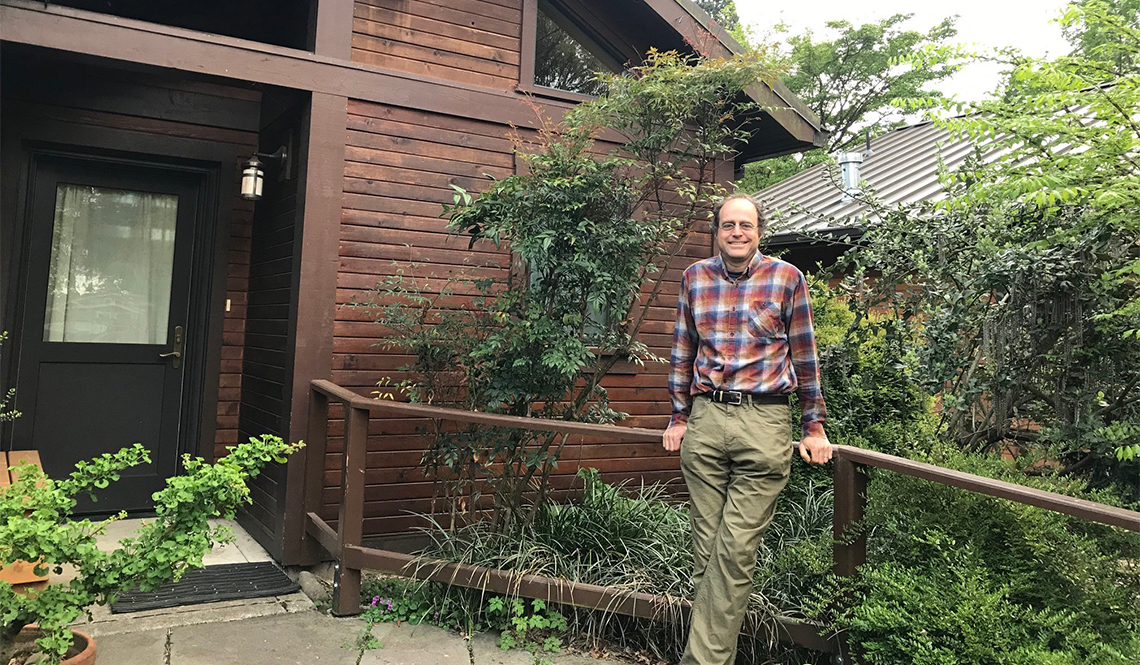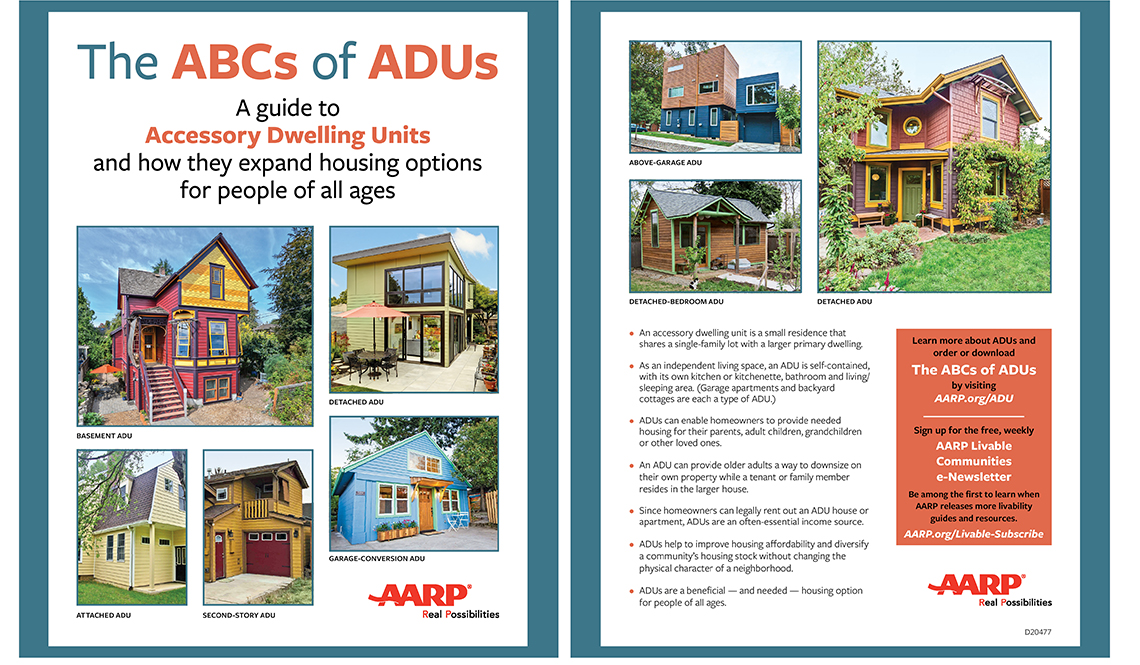Livable Lesson: Accessory Dwelling Units
Eli Spevak, a builder and advocate for community-oriented housing that’s both affordable and environmentally-friendly, discusses the importance of and need for ADUs
Accessory Dwelling Units (or ADUs) are small homes or apartments that are built by homeowners as a second residence on a property zoned as a single-family lot. ADUs — which are more commonly referred to as, among other terms, backyard bungalows, in-law suites or basement apartments — are increasingly seen as a housing solution for people of all ages, life stages and income levels.
Print or Order the Guide
Eli Spevak is the co-author of The ABCs of ADUs, a free publication by AARP Livable Communities.
ADUs can be useful for older adults looking to stay in their existing neighborhood or close to family as well as for younger residents in need of an affordable, suitably-sized housing option, often in a more expensive area. ADUs can also be helpful to those seeking income from a rental property or who want to provide housing for a relative, friend or care provider.
As a result, communities are changing long-standing zoning regulations that have both restricted the construction of ADUs and deemed as illegal those that do exist, often from an era long before the advent of modern zoning codes.
Eli Spevak, an ADU advocate, builder, developer and educator explains the history of ADUs in America, the benefits of ADUs, and how ADUs support the local economy by employing small businesses and local contractors. He also provides information about ADU resources and discusses the different funding mechanisms that can be used to fund the creation of an ADU.
Watch the four subject-specific videos below — or watch all four segments in one video.
Videos
Lesson 1: Accessory Dwelling Units
Learn why and how ADUs are an increasingly popular housing option for people of all ages. Eli Spevak explains his passion for ADUs.
Lesson 2: (Re) introduction to ADUs
Eli Spevak addresses misconceptions about ADUs, describing the different types, where and how they are built and who lives in them.
Lesson 3: History and Benefits of ADUs
Single-family zoning has been the prevalent standard for a century. Where ADUs are now legal, permit applications are on the rise.
Lesson 4: Emerging Trends and ADU Resources
Modular ADUs and ADU funding pilots are popping up in many communities. But obstacles remain for interested homeowners.
Accessory Dwelling Units: The Complete Collection
Watch all four videos together with a single click.
The Benefits of ADUs
- Can be right-sized for smaller households
- Are cheaper to build, maintain, heat and cool than larger homes
- Provide an affordable and equitable housing option
- Offer suitable housing for older adults as well as younger residents
- Ease isolation by enabling older adults to live near family, friends or a caregiver
- Facilitate multi-generational living arrangements
- Deliver positive environmental benefits
- Promote walkable neighborhoods
- Use and enhance existing structures
- Open opportunities for small businesses and local builders
- Encourage neighborhood connections
- Allow for a limited and discreet increase in density
The videos on this page were created by an external organization so might not reflect AARP’s public policies or advocacy positions, which can be found in the AARP Policy Book.
The videos were filmed in 2020 | Page published April 2021
Stay Informed
The weekly, award-winning AARP Livable Communities e-Newsletter provides local leaders with information and inspiration for making their town, city or neighborhood more livable for older adults and people of all ages. Subscribe today!
AARP.org/Livable
Enter a topic, name, place, etc.





